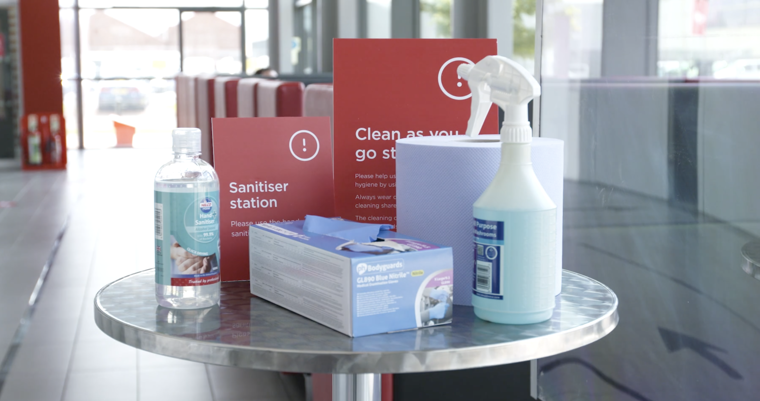The mention of ‘health and safety’ might produce a sigh among employees and business owners alike, who believe that a health and safety culture has overreached into working lives. But the alternatives are much more serious. GTG looks at some of the categories in which modern health and safety culture helps keep properties in safe working condition, and employees safe from harm at work.

Ventilation
A fresh air supply is important in an indoor workplace, and has been especially so during the COVID-19 pandemic, when many workplaces including restaurants, offices and cinemas opened their doors to employees and the public between UK nations’ lockdowns in spring and autumn 2020.
A supply of fresh air to an indoor space reduces the concentration of aerosol particles between people, reducing virus transmission.
You can help improve fresh air supply in an enclosed workspace by:
- Partially opening windows to introduce fresh air into a room.
- Opening windows and doors in a room when occupied or between uses, to create a through-draft and renew the air supply in the room.
- Mechanical ventilation, providing fresh air and/or heating, or both (HVAC) can be used to introduce fresh air to an indoor space while people are using it. Equally, mechanical ventilation can be used before and after a room has been occupied, to introduce and renew a supply of fresh air to the enclosed space.
You may also want to advise people using a room with open windows, especially in winter months, to modify their dress code — such as wearing additional layers of clothing like a warm jumper — for colder indoor temperatures.
Cleaning routine
However, ventilation has little to no effect on limiting transmission of viruses through manual contact with ‘touchpoints’ like door handles or vending machines. This is called ‘contact transmission’.
To reduce the risk of contact transmission in your workplace, carry out regular cleaning around your work spaces, including disinfecting bathroom surface areas, door handles, shared seating and table areas – ideally multiple times per day.
Consider introducing a cleaning station in shared spaces such as dining areas and breakout spaces where multiple people may use food and drink preparation areas, and surfaces like tables, chairs and couches. Employees and site visitors can wipe down surfaces in shared facilities, and should be encouraged to wipe down other communally-used surfaces such as vending machines.
Fire safety
Even with many workspaces vacated during the past year, it is still supremely important that you keep buildings in a safe, useable condition for when employees do return. Reducing the risk of fire as much as possible is a very important part of promoting a safe modern working environment.
Ensuring people’s safety from fire at work includes:
- Conducting weekly fire alarm tests, and regular drills, including evacuation of all at-risk buildings (including the training and appointment of fire wardens to take counts of employees at muster points, and liaise with fire services attending).
- Storing material that burns easily such as paper, wood, rubber, foam, as well as waste and rubbish, in the appropriate place, away from sources of heat like artificial lighting, or from ignition.
- Keep your building’s fire exits clear at all times.
- Have the correct fire-fighting equipment clearly visible in the building, to allow yourself or employees to put a fire out quickly.
Make sure you carry out a fire safety risk assessment to establish how well your fire safety protocols meet health and safety standards [https://www.hse.gov.uk/toolbox/fire.htm]
Working from home during COVID and beyond
If you have employees working from home you should make sure they have all the equipment they need to carry out their duties. For an office-based employee this could include:
- A laptop or desktop computer
- A phone and/or videoconferencing capability.
As well as providing the tools to do the job, it’s important as an employer to keep in touch with your employees regularly, to talk about their wellbeing, and to try to help address any concerns that they may have.
Home-working looks set to be a feature of many workplaces and areas of study throughout 2021 and beyond, so it’s important to consider what support you can give to your employees who are adapting to different ways of working.
Whether it’s fire safety training or working at height you want to tackle, we have Health and Safety courses to suit all businesses.